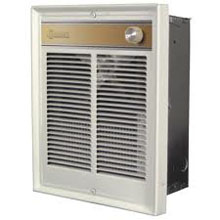
Electric Heaters Resources
- Home
- Efficient Electric Heaters
- Electric Heaters for Different Rooms
- Outdoor Electric Heaters
- Portable Electric Heaters
- 12 Volt Electric Heaters
- 220 Volt Heater
- 3 Phase Electrical Heater
- Above Ground Pool Electric Heater
- Antique Electric Heaters
- Baseboard Electronic Heaters
- Bathroom Electric Heaters
- Best Electric Heaters
- Buy Electric Heaters
- Car Electric Heaters
- Ceiling Electric Heaters
- Ceiling Mounted Electric Heaters
- Ceramic Electric Heaters
- Cheap Electric Heaters
- Commercial Electric Heaters
- Compact Electric Heaters
- Convection Electric Heaters
- DC Electric Heaters
- Economical Electric Heaters
- Efficient Electric Heaters
- Electric Heater Reviews
- Electric Heater With Thermostat
- Fahrenheat Electric Heaters
- Fan Forced Electric Heaters
- Fireplace Electric Heaters
- Flat Panel Electric Heaters
- Floor Electric Heaters
- Forced Air Electric Heaters
- Free Standing Electric Heaters
- General Electric Heaters
- Greenhouse Electric Heaters
- Halogen Electric Heaters
- Hanging Electric Heaters
- Heavy Duty Electric Heaters
- High Efficiency Electric Heaters
- Home Electric Heaters
- In Wall Electric Heaters
- Indoor Electric Heaters
- Industrial Electric Heaters
- Infrared Electric Heaters
- Infrared Electric Heater Reviews
- Large Electric Heaters
- Large Room Electric Heaters
- Low Wattage Electric Heaters
- Marine Electric Heater
- Mini Electric Heaters
- Non Electric Heaters
- Oil Electric Heaters
- Oil Filled Electric Heaters
- Overhead Electric Heaters
- Panel Electric Heaters
- Patio Electric Heaters
- Plug in Electric Heaters
- Process Electric Heaters
- Radiant Electric Heaters
- Recessed Electric Heaters
- Residential Electric Heaters
- RV Electric Heaters
- Safe Electric Heaters
- Small Electric Heaters
- Small Portable Electric Heaters
- Solar Electric Heaters
- Spa Electric Heaters
- Space Electric Heaters
- Swimming Pool Electric Heaters
- Toe kick Electric Heaters
- Tubular Electric Heaters
- Types of Electric Heaters
- Used Electric Heaters
- Vintage Electric Heaters
- Wall Electric Heaters
- Warehouse Electric Heaters
- Electric Heaters FAQ
Wall electric heaters
In the United States, the cold season is unavoidable, and it may mean a lot of shivering and teeth chattering for some of us who are sensitive to the cold. That is why in a US home, heating facilities or appliances are a must, to keep each space warm and comfortable so that you can go around your work without needing to conform to the chilling temperature.
Uses of wall electric heaters
For additional heating in certain rooms, wall electric heaters are a great choice. This is especially so if you need extra warmth in rooms such as bathrooms, bedrooms of children or the elderly, and in bedrooms of those who cannot take low temperatures.
How are they like?
The heating units of wall electric heaters usually consist of the heating elements and a fan, which will blow the hot air around the space.
Installation wise, they are designed for a direct fit with the wall, and they are typically recessed in between two wall studs. There will be a metal frame that is installed in the wall, either attached to one side stud or in between two studs. Then the heating unit will be installed within the frame. After that, a safety cover will be installed over both the heating unit and the frame, so that no components will be exposed, reducing risk of burning or malfunctioning.
The safety cover will feature the controls, and it is sometimes louvered in order to allow adjustments of the heat emitted from the unit.
Are wall electric heaters safe?
Usually, there will be a thermostat that controls the temperature. Some wall electric heaters may feature the thermostat on the cover. This may seem convenient, yet it is not that accurate. This is because the cover will be warmed when the heater is running; causing the temperature that is indicated to be higher than the actual temperature.
What to take note of?
You will have to choose a heater that suits the space you want to heat, in terms of size and power. When it comes to choosing a heater, the insulation of the room and its size does matter a lot. So, first you have to measure the square foot size of the space you intend to install your heater, for a room that is well-insulated, allow 10 watts of power for each square foot. If your room is not well insulated, allow 12 watts instead. For non- insulated rooms, it is advisable to allow 15 watts every square foot.
Wall electric heaters are not only quick to install and easy to use, all you need to do is to plug your heater to the power source and you can use it right away. That is why electric wall heaters win hands down, compared to gas wall heaters which requires you to replace gas when it runs out. They are also an affordable appliance, suitable for the modern home. Being quick, effective, and with its low cost, it is no wonder that they gain popularity so fast.
